A Method for Predicting Ground Pressure in Meihuajing Coal Mine Based on Improved BP Neural Network by Immune Algorithm-Particle Swarm Optimization
Abstract
1. Introduction
2. Research Background
2.1. Engineering Background
2.2. Monitoring of Support Resistance Data
3. IA-PSO-BP Algorithmic Theory
3.1. BP Neural Network
3.2. Particle Swarm Optimization Algorithm (PSO)
3.3. IA-PSO Algorithm
4. IA-PSO-BP Support Pressure Prediction Algorithm
4.1. Data Source
4.2. Data Preprocessing and Normalization
4.2.1. Data Preprocessing
- (1)
- Outlier value handling
- (2)
- Missing value handling
- (3)
- Duplicate values handling
4.2.2. Data Normalization
4.3. Design of IA-PSO-BP Neural Network Model
4.3.1. Model Concept
4.3.2. Construction of Populations and Fitness Function
4.3.3. Implementation Steps of the Model
- (1)
- BP network learning parameter settings: Determine the activation function, training function, learning rate (lr), target error (goal), and maximum iteration count (epochs) based on the training sample data.
- (2)
- Parameter Settings for IA-PSO Algorithm: The parameters include the number of particles N, the initial positions xi and velocities vi of the particles, the acceleration constants c1 and c2, the inertia weight w, and the individual best value pbest and global best value gbest.
- (1)
- Calculate the fitness F(xi) of each particle, and determine the individual best value and global best value.
- (2)
- Update the position and velocity of the particles, and update the individual and global best values for the particles.
- (3)
- Calculate the individual concentration and replacement probability, and use a concentration selection mechanism to select N suitable particles.
- (1)
- The training error reaches the required accuracy.
- (2)
- Stops iterating when the maximum number of iterations for training is reached.
5. Construction of the IA-PSO-BP Ground Pressure Prediction Model
5.1. The Determination of the Topology Structure and Parameter Selection of BP Neural Networks
- (1)
- Determination of Topological Structure
- (2)
- Parameter Selection for BP Neural Network
5.2. Parameter Setting for IA-PSO Optimization Algorithm
- (1)
- Population size N
- (2)
- Inertial weight w.
- (3)
- Particle acceleration constants c1 and c2
5.3. Determination of Optimal Length for Historical Data
6. Results and Analysis
6.1. Model Evaluation Metrics
6.2. Model Convergence Speed and Loss Value
6.2.1. Convergence Speed
6.2.2. Loss Value
6.3. Comparison of Ground Pressure Prediction Performance among Different Models
7. Discussion
- (1)
- Due to the complexity of the underground environment, the monitoring equipment is restricted by the disturbance of the mining project and the installation technology, which leads to the lack of integrity of the monitoring data and the existence of a large number of outliers and missing values, which has a greater impact on the prediction of the actual mine pressure data in the underground.
- (2)
- The limited nature of the data set affects the prediction accuracy of the model.
- (3)
- In the future, correlation analysis or data fusion will be performed on different types of monitoring data from the same working face to establish a training data set with a larger data volume and more data types, so as to further improve the accuracy of predicting mine pressure at the working face.
- (4)
- In the paper, the mine pressure monitoring data of the No. 232205 working face of the Meihuajing coal mine is selected as the data source, and in the future, we need to consider the generalization function of the model, and use the transfer-learning method to use the trained model to predict the mine pressure accurately in the working face under similar geological and mining conditions.
- (5)
- Establishing a dynamic mine pressure monitoring and early warning and forecasting system for coal mines based on Python, CSS, html and JavaScript programming languages to achieve dynamic visualization monitoring of mine pressure at the working face and intelligent prediction and warning of mine pressure disasters.
8. Conclusions
- (1)
- By combining the immune algorithm and PSO algorithm, the inherent defects of BP network were surmounted. Furthermore, the problem of slow convergence speed caused by the decrease of particle diversity in the later stage of PSO algorithm was surmounted. A prediction method of working face ground pressure based on IA-PSO-BP was proposed. According to the relationship between the mean square error of network prediction and the length of historical data, the optimal historical support pressure data length lbest = 11 of the ground pressure prediction model was determined.
- (2)
- The convergence speed of the IA-PSO-BP model was approximately eight times faster than the BP model and two times faster than the PSO-BP model. Meanwhile, the IA-PSO optimization algorithm had the fastest decreasing loss value, which tended to stabilize after a certain number of iterations and was lower than the other optimization algorithms.
- (3)
- The IA-PSO-BP model achieved the best prediction performance on three different datasets with varying data sizes. As the data size increases, the prediction errors of all models gradually decreased. The IA-PSO-BP model exhibited the smallest MAE and MSE, as well as the largest R2, compared to the BP and PSO-BP models on the three test sets. The average MAE, MSE, and R2 on the three test sets were 0.0751, 0.0123, and 0.9747. Therefore, the IA-PSO hybrid optimization algorithm significantly improved the prediction accuracy of the model.
Author Contributions
Funding
Data Availability Statement
Conflicts of Interest
References
- Xie, H.; Liu, H.; Wu, G. Quantitative analysis of coal contribution to national Economic Development. China Energy 2012, 34, 5–9. [Google Scholar]
- Guo, P.; Wang, T.; Li, D.; Zhou, X. How energy technology innovation affects transition of coal resource-based economy in China. Energy Policy 2016, 92, 1–6. [Google Scholar] [CrossRef]
- Qi, Q.; Pan, Y.; Shu, L.; Li, H.; Jiang, D.; Zhao, S.; Zou, Y.; Pan, J.; Wang, K.; Li, H. Theory and technical framework of prevention and control with different sources in multi-scales for coal and rock dynamic disasters in deep mining of coal mines. J. China Coal Soc. 2018, 43, 1801–1810. [Google Scholar]
- Wang, J.C.; Xu, J.L.; Yang, S.L.; Wang, Z.H. Development of strata movement and its control in underground mining: In memory of 40 years of Voussoir Beam Theory proposed by Academician Minggao Qian. Coal Sci. Technol. 2023, 51, 80–94. [Google Scholar]
- Huang, Q. Mineral pressure characteristics and definition of shallow buried coal seam. J. Rock Mech. Eng. 2002, 21, 1174–1177. [Google Scholar]
- Yan, B.; Jia, H.; Yang, Z.; Yilmaz, E.; Liu, H. Goaf instability in an open pit iron mine triggered by dynamics disturbance: A large-scale similar simulation. Int. J. Min. Reclam. Environ. 2023, 37, 606–629. [Google Scholar] [CrossRef]
- Ma, Y.; Sun, B.; Li, D. Mine Development Design Expert System Based on Neural Network. In Proceedings of the 24th APCOM Symposium, Montreal, QC, Canada, 31 October–3 November 1993; pp. 161–169. [Google Scholar]
- Fei, G. Analysis of the types of coal mine accidents in China from 2006 to 2015. Inn. Mong. Coal Econ. 2017, 22, 120–121. [Google Scholar]
- Skrzypkowski, K.; Korzeniowski, W.; Duc, T.N. Choice of powered roof support FAZOS-15/31-POz for Vang Danh hard coal mine. J. Pol. Miner. Eng. Soc. 2020, 21, 175–182. [Google Scholar] [CrossRef]
- Jia, B.; Xian, C.; Jia, W.; Su, J. Improved Petrophysical Property Evaluation of Shaly Sand Reservoirs Using Modified Grey Wolf Intelligence Algorithm. Comput. Geosci. 2023, 27, 537–549. [Google Scholar] [CrossRef]
- Jia, B.; Xian, C. Permeability measurement of the fracture-matrix system with 3D embedded discrete fracture model. Pet. Sci. 2022, 19, 1757–1765. [Google Scholar] [CrossRef]
- Zhou, D.; Zuo, X. Surface subsidence monitoring and prediction in mining area based on SBAS-InSAR and PSO-BP neural network algorithm. J. Yunnan Univ. Nat. Sci. Ed. 2021, 43, 895–905. [Google Scholar]
- Qu, S.; Li, P. Research on prediction technology of roof mining pressure based on big data of support resistance. Min. Saf. Environ. Prot. 2019, 46, 92–97. [Google Scholar]
- Conover, D.P.; Barczak, T.M. The Niosh shield hydraulics inspection and evaluation of leg data (shield) computer program. In Proceedings of the 21st International Conference on Ground Control in Mining, Morgantown, WV, USA, 6–8 August 2002; pp. 27–38. [Google Scholar]
- Wang, J.; Gao, R.; Yu, G.; Gong, W.; Zhu, D. Experimental study on infrared radiation characteristics of overburden movement of self-forming roadway under pressure relief. J. China Coal Soc. 2020, 45, 119–127. [Google Scholar]
- Pan, J.F.; Kang, H.P.; Yan, Y.D.; Ma, X.H.; Ma, W.T.; Lu, C.; Lv, D.Z.; Xu, G.; Feng, M.H.; Xia, Y.X.; et al. The method, mechanism and application of preventing rock burst by artificial liberation layer of roof. J. China Coal Soc. 2023, 48, 636–648. [Google Scholar]
- Ghosh, G.-K.; Sivakumar, C. Application of underground microseismic monitoring for ground failure and secure longwall coal mining operation: A case study in an Indian mine. J. Appl. Geophys. 2018, 150, 21–39. [Google Scholar] [CrossRef]
- Sivakumar, C.; Srinivasan, C.; Gupta, R.N. Microseismic monitoring to study strata behavior and to predict roof falls on a Longwall face at Rajendra Colliery in India. In Proceedings of the 6th Symposium on Rock Burst and Seismicity in Mines (RASIM 6), Perth, WA, Australia, 9–11 March 2005; pp. 135–144. [Google Scholar]
- Pan, Y.; Zhao, Y.; Guan, F.; Li, G.; Ma, Z. Study on rockburst monitoring and orientation system and its application. Chin. J. Rock Mech. Eng. 2017, 26, 1002–1011. [Google Scholar]
- Wang, E.Y.; He, X.; Li, Z.H.; Zhao, E. Electromagnetic Radiation Technology of Coal Rock and Its Application; Beijing Science Press: Beijing, China, 2009. [Google Scholar]
- Li, A.N.; Ling, L.M.; Wang, Z.Y.; Cao, J.R.; Wang, S.W.; Shan, C.H. Numerical simulation of rock burst of horizontal sectional mining of near-vertical coal seam under dynamic load. Coal Eng. 2018, 50, 83–87. [Google Scholar]
- He, C.; Hua, X.; Yang, K. Forecast of periodic weighting in working face based on back propagation neural network. J. Anhui Univ. Sci. Technol. (Nat. Sci.) 2012, 32, 59–63. [Google Scholar]
- Wu, X.; Lai, X.; Guo, J.; Cui, F.; Wang, Z.; Xu, H. PSO-SVM prediction model of coal pillar width in fully mechanized mining face. J. Xi’an Univ. Sci. Technol. 2020, 40, 64–70. [Google Scholar]
- Zhao, Y.X.; Yang, Z.L.; Ma, B.J.; Song, H.H.; Yang, D.H. Deep learning prediction and model generalization of ground pressure for deep longwall face with large mining height. J. China Coal Soc. 2020, 45, 54–65. [Google Scholar]
- Huang, M.; Zhang, T.; Wang, J.; Zhu, L. A new air quality forecasting model using data mining and artificial neural network. In Proceedings of the 2015 6th IEEE International Conference on Software Engineering and Service Science (ICSESS), Beijing, China, 23–25 September 2015; pp. 259–262. [Google Scholar]
- Lang, J.; He, Q.; Fan, X.; Huang, P.; Zhang, X. Prediction of airflow classification effect of wet coal based on BP neural network. J. China Coal Soc. 2021, 46, 1001–1010. [Google Scholar]
- Zhang, M.; Yuan, H. The pauta criterion and rejecting the abnormal value. J. Zhengzhou Univ. 1997, 87–91. [Google Scholar]
- Chang, Q.; Zhou, H.; Qing, J.; Fan, J.; Wang, Y. Using artificial neural network model to determine the prescription of paste filling materials. J. Min. Saf. Eng. 2009, 26, 74–77. [Google Scholar]
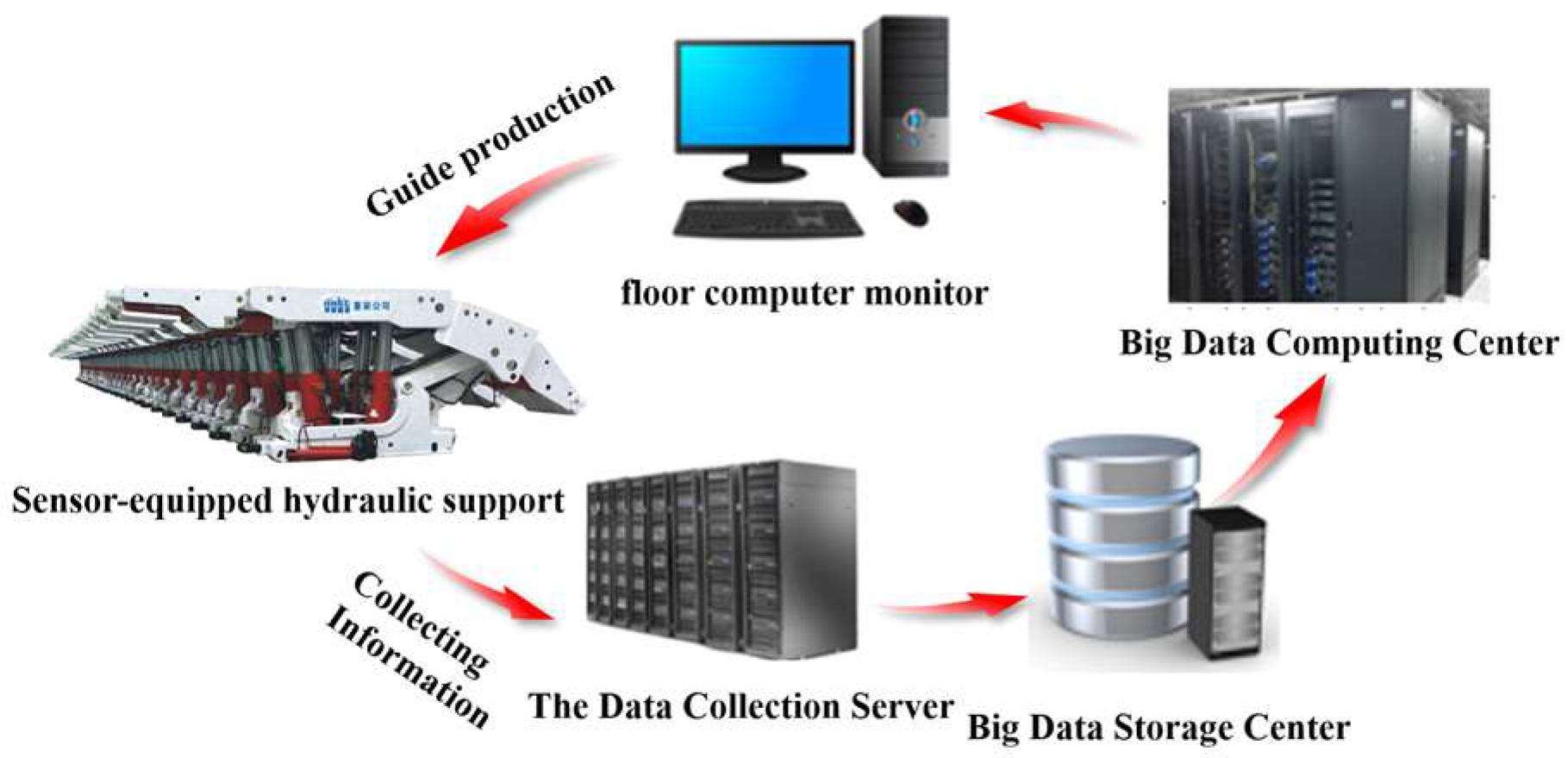
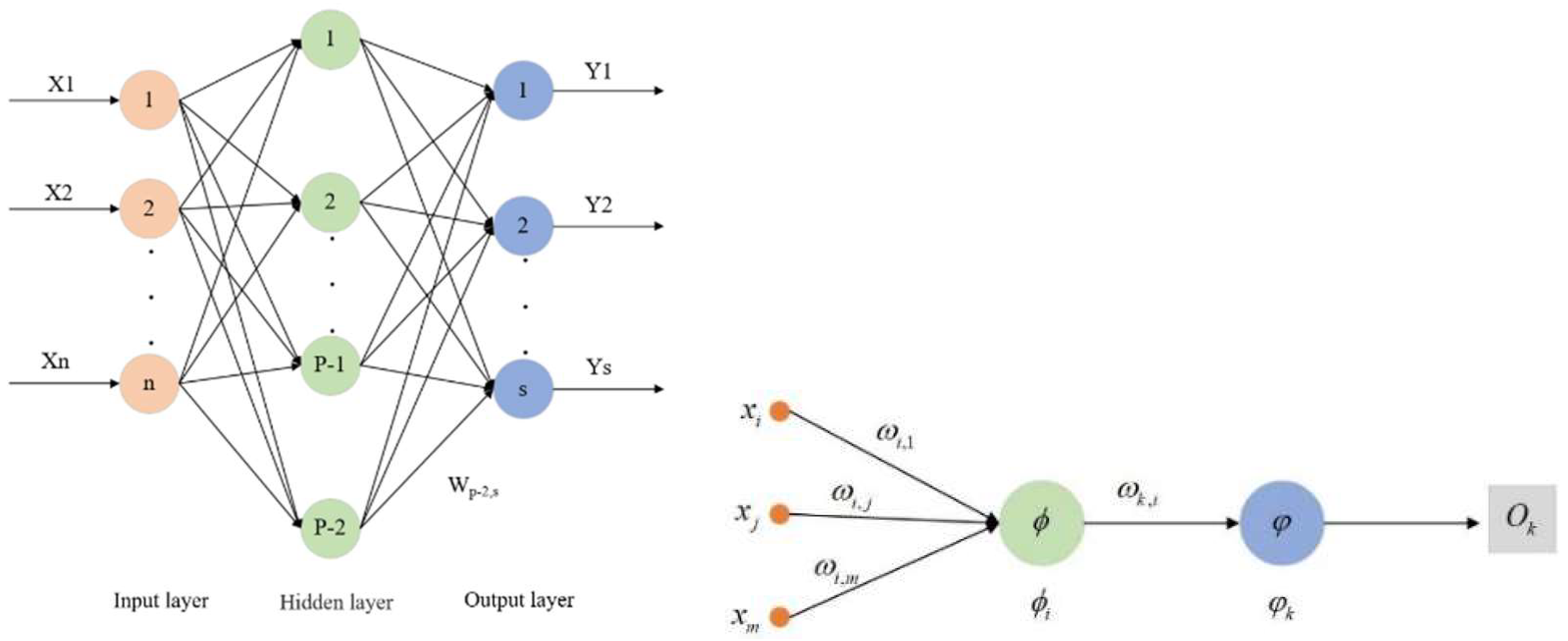
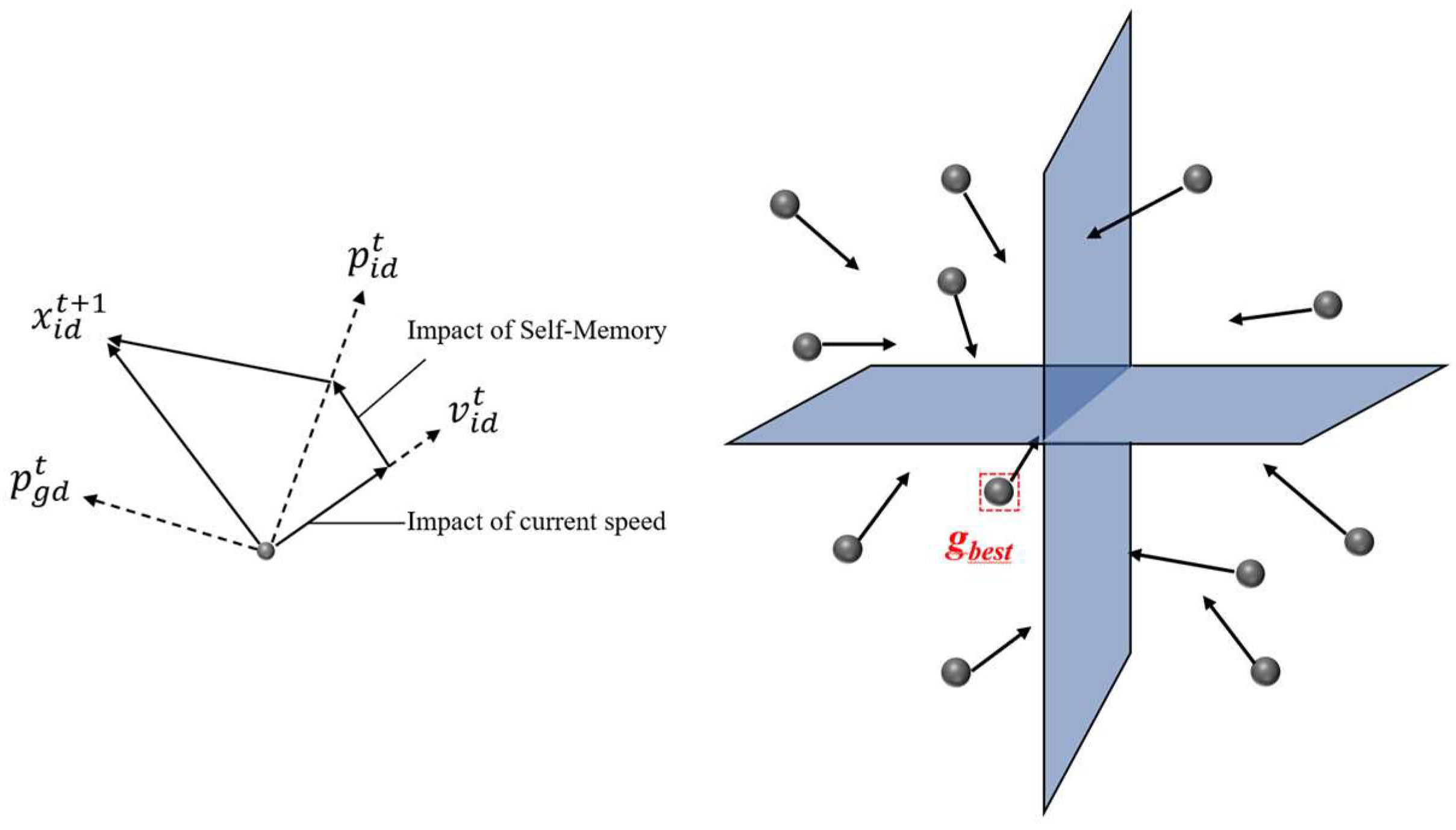
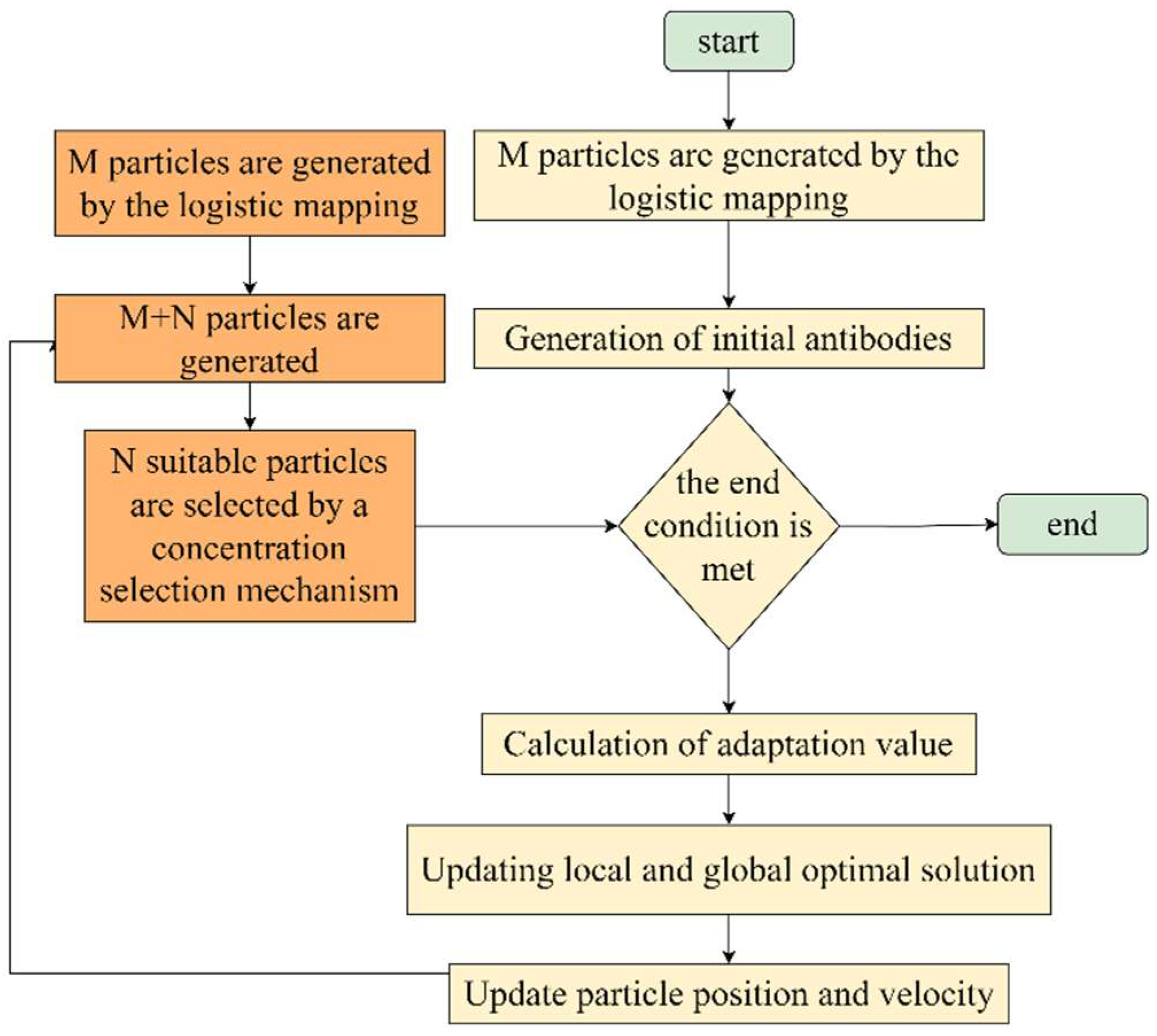
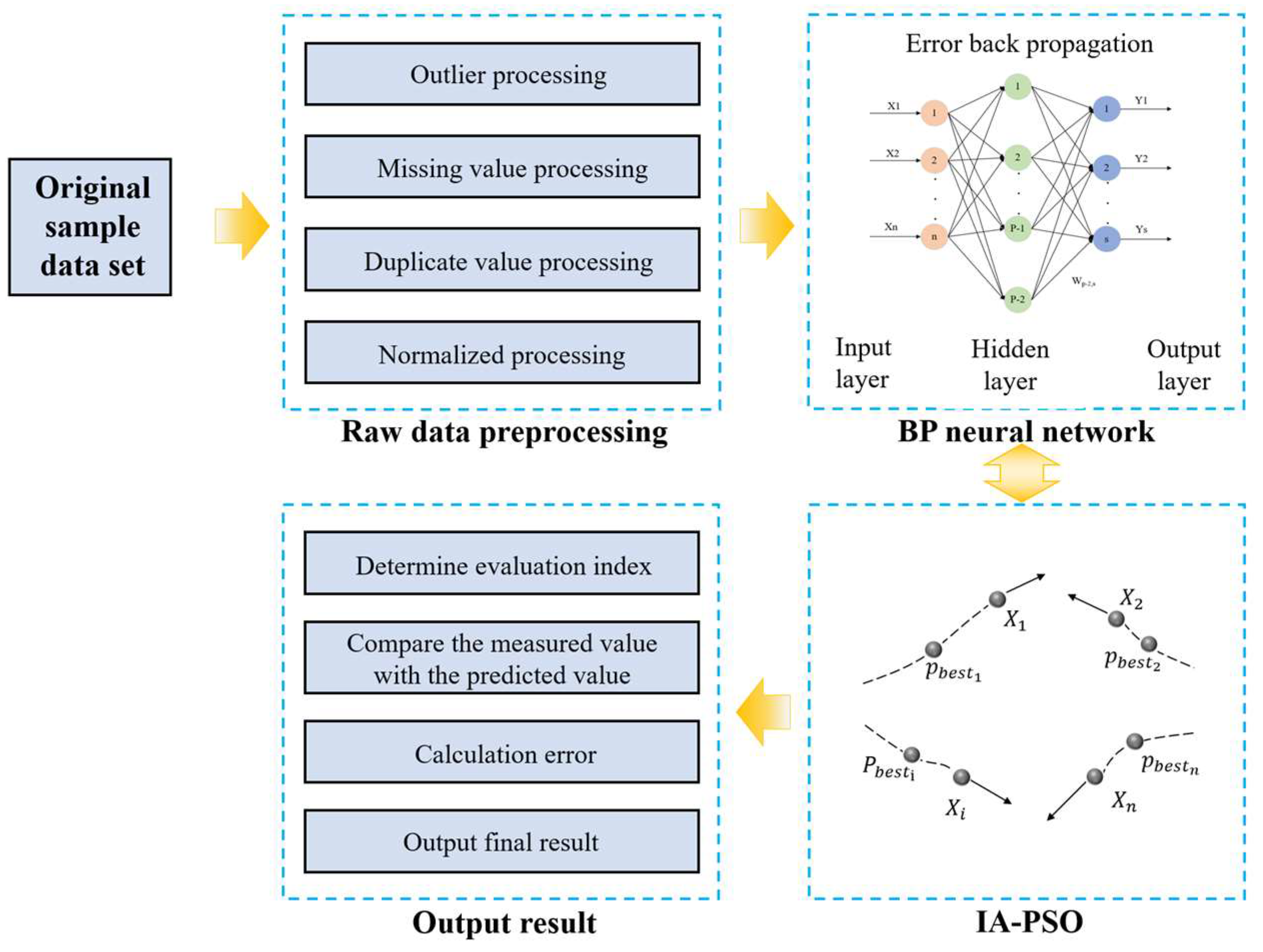
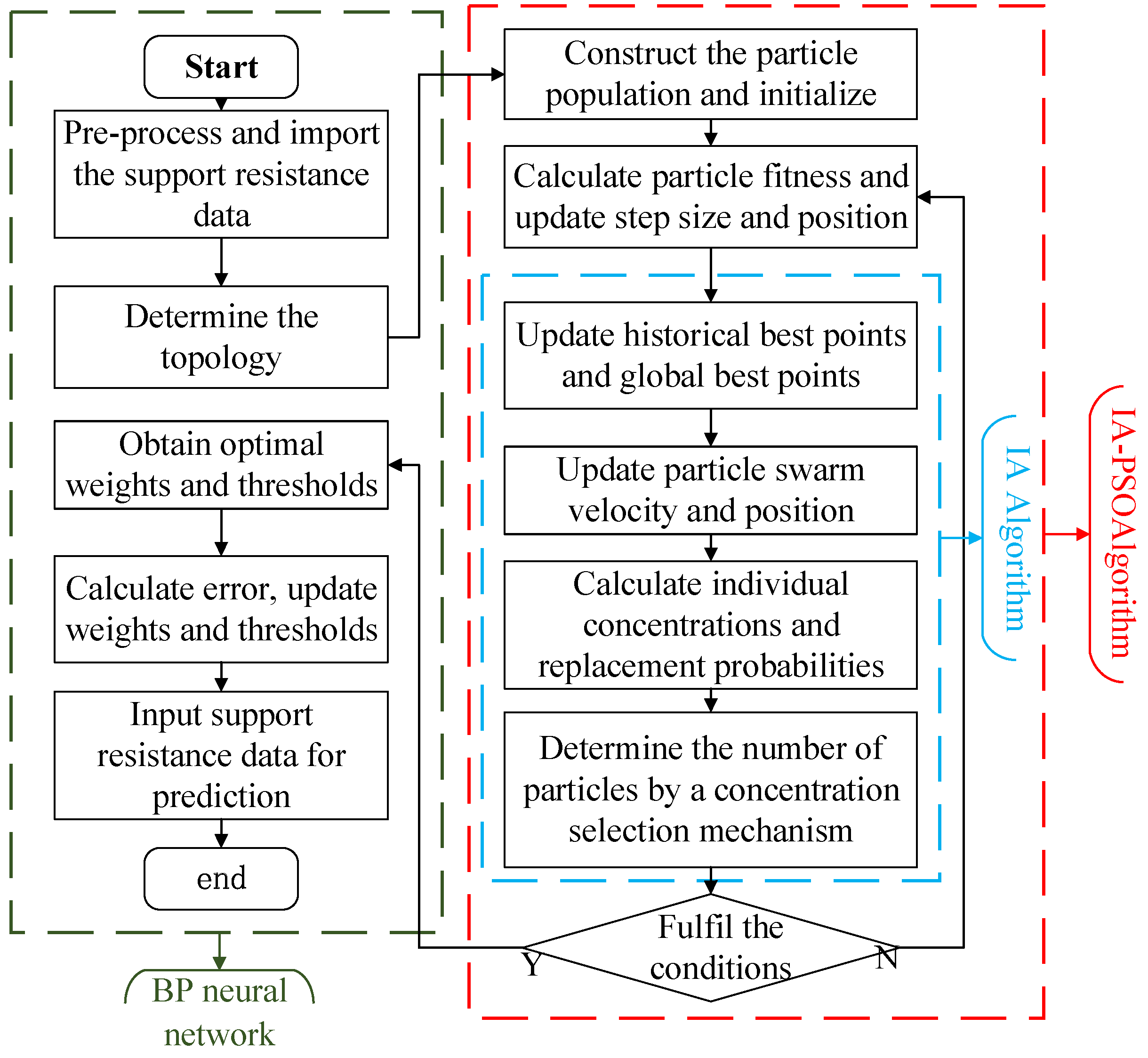
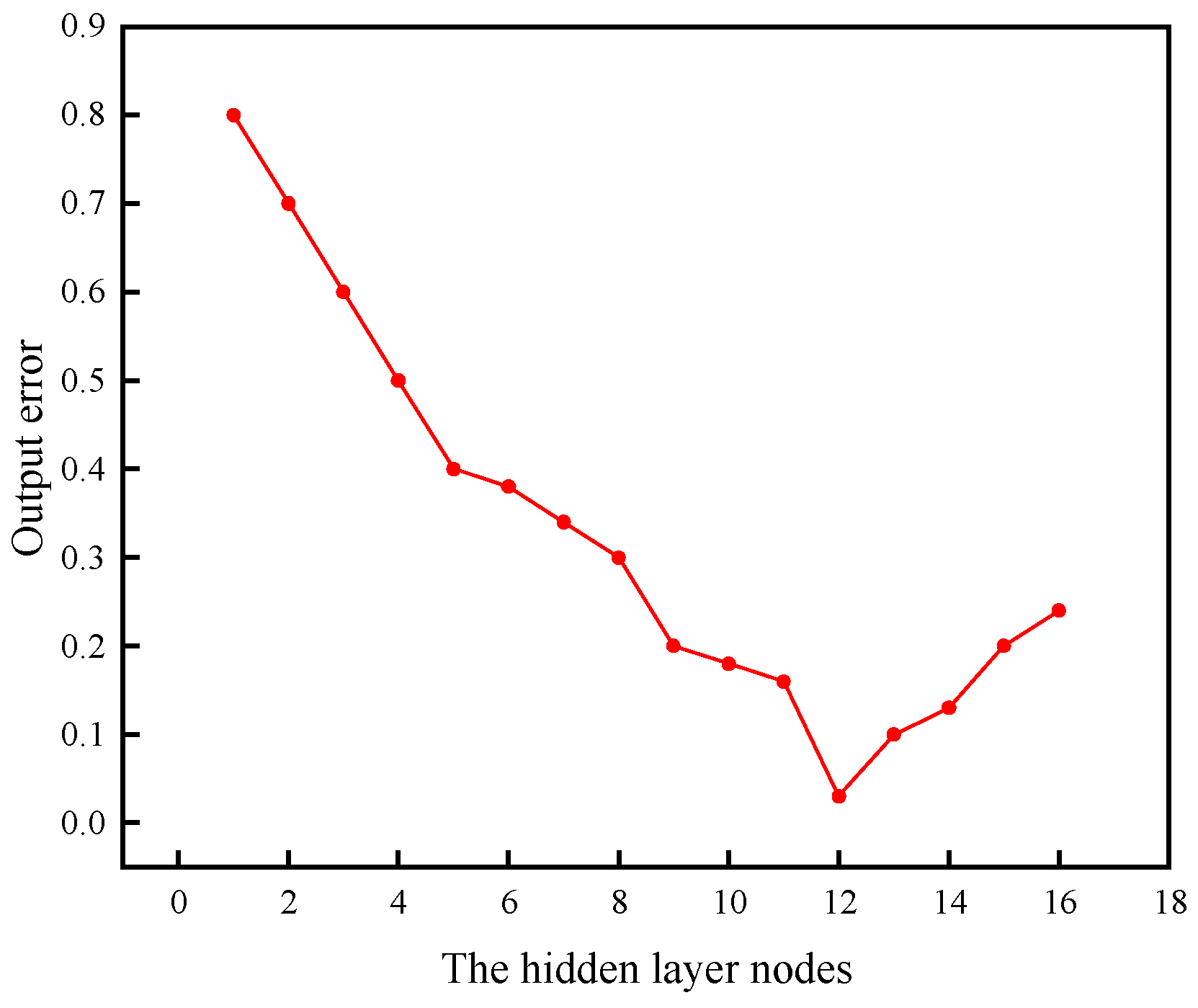

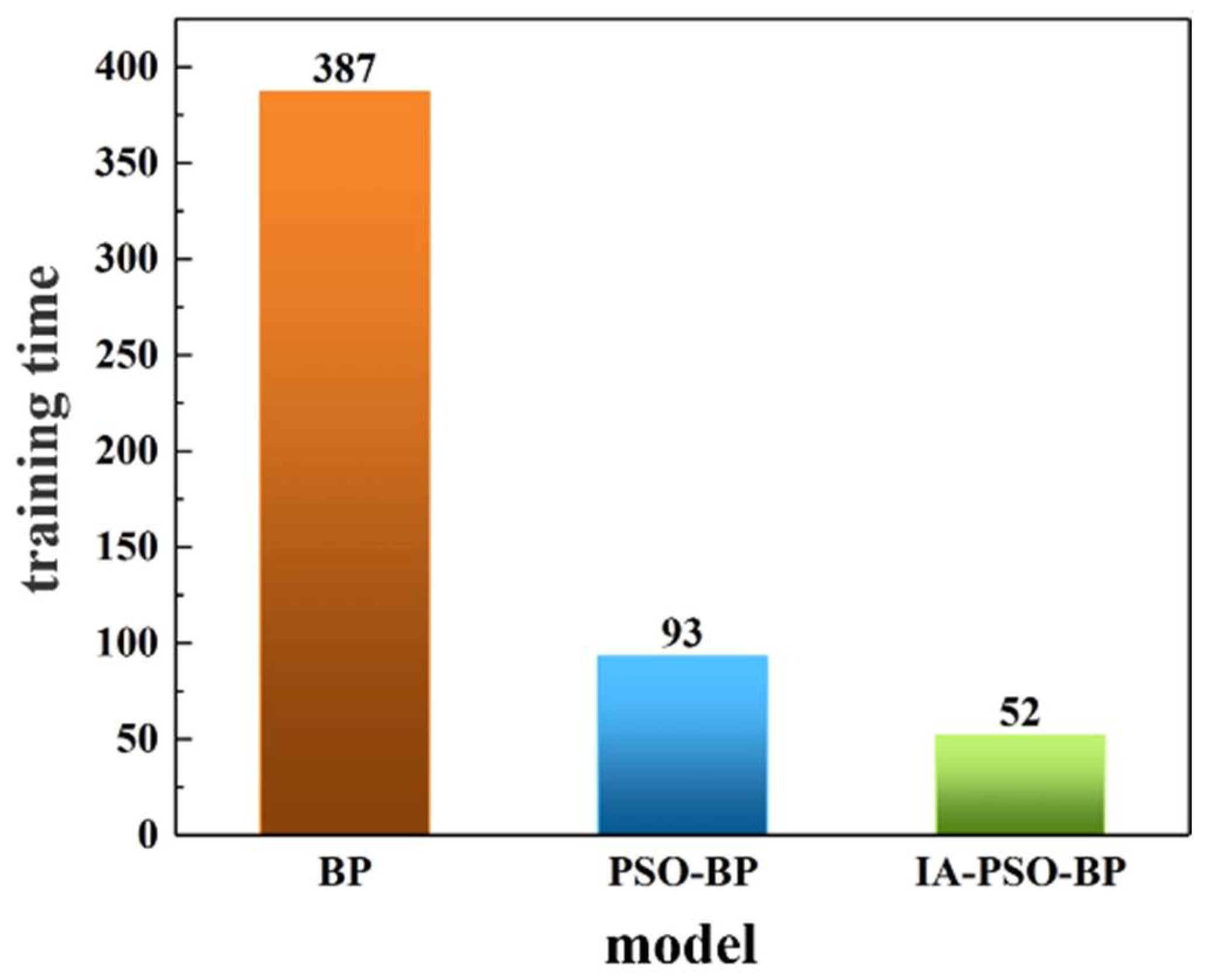
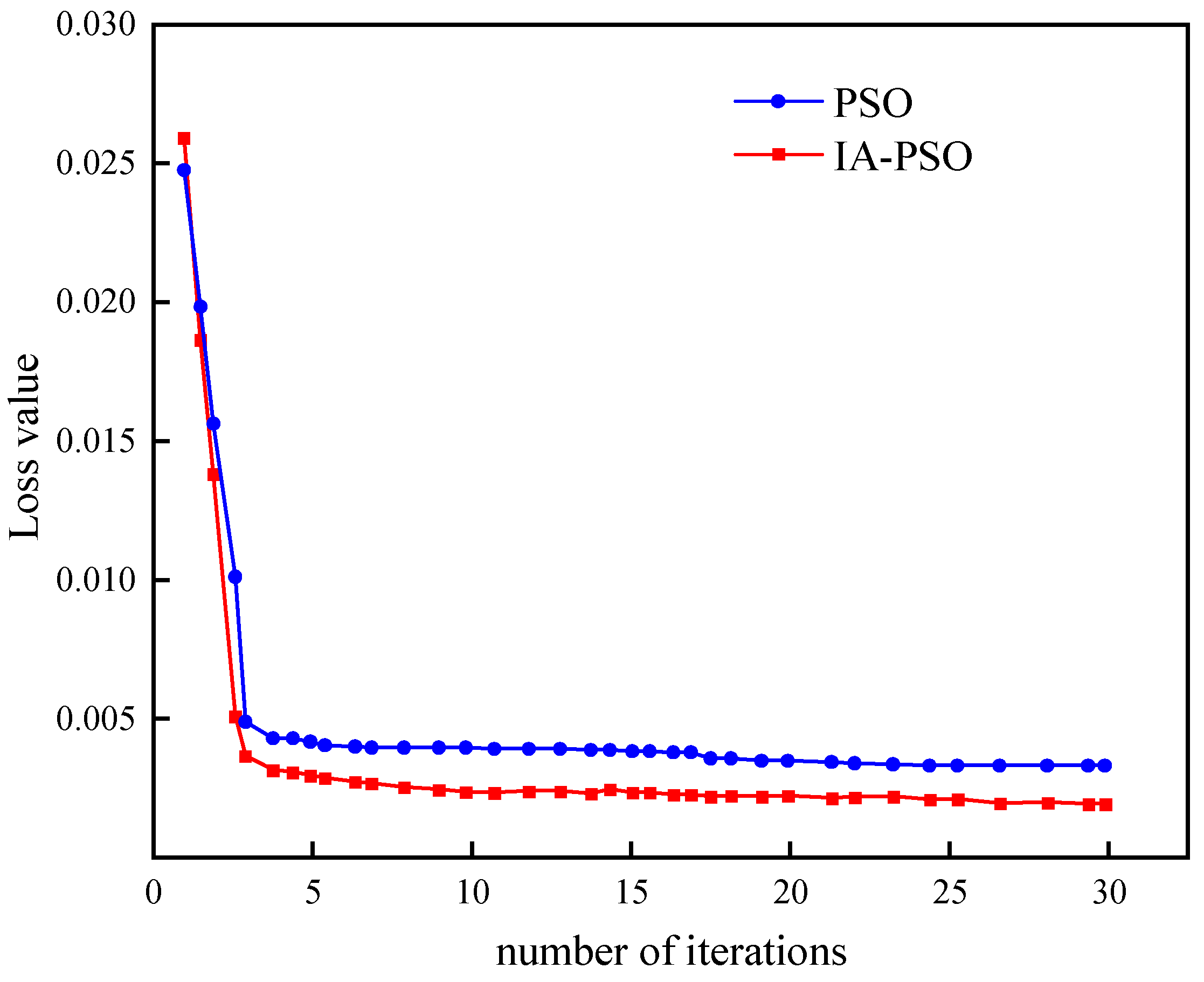
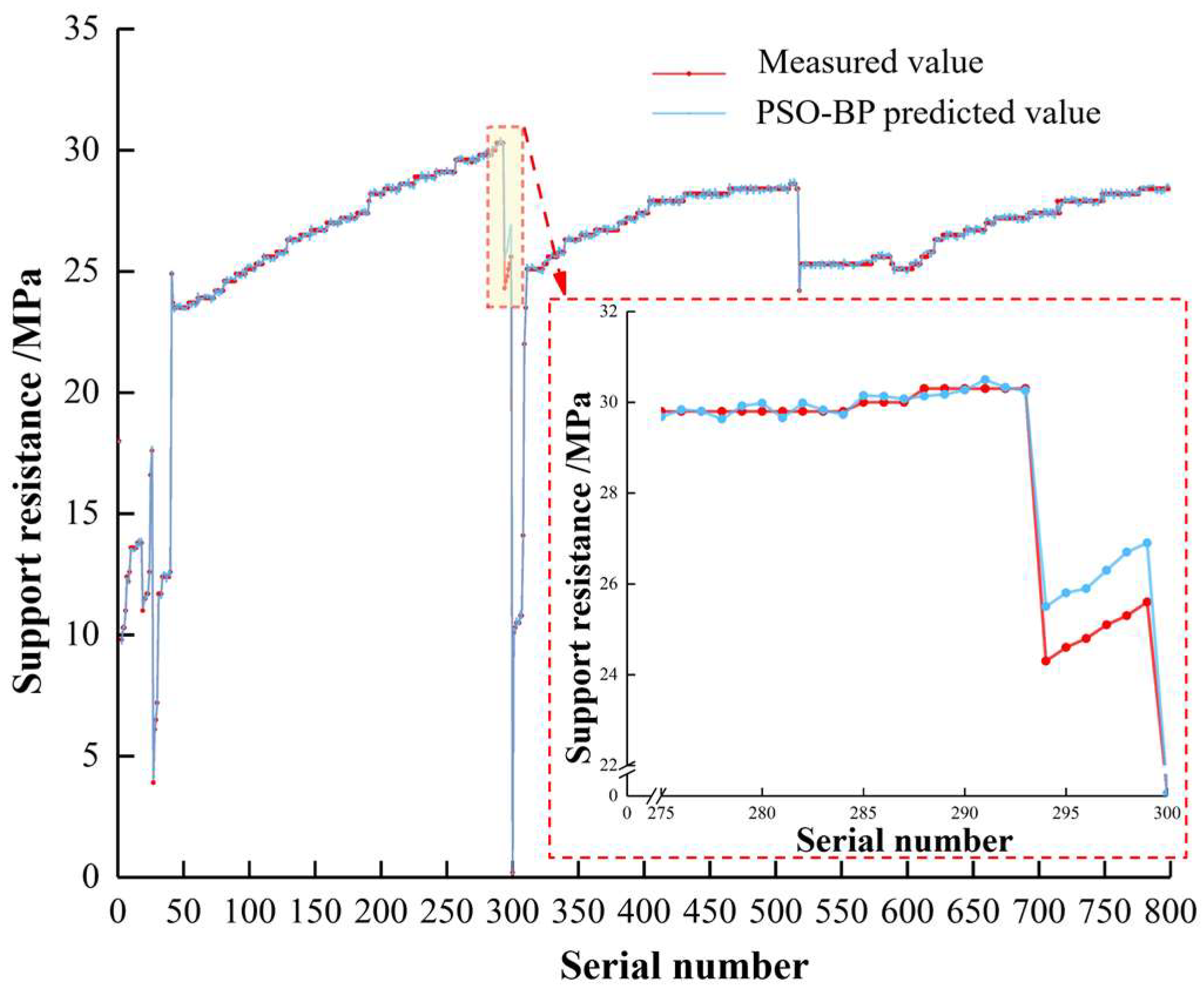
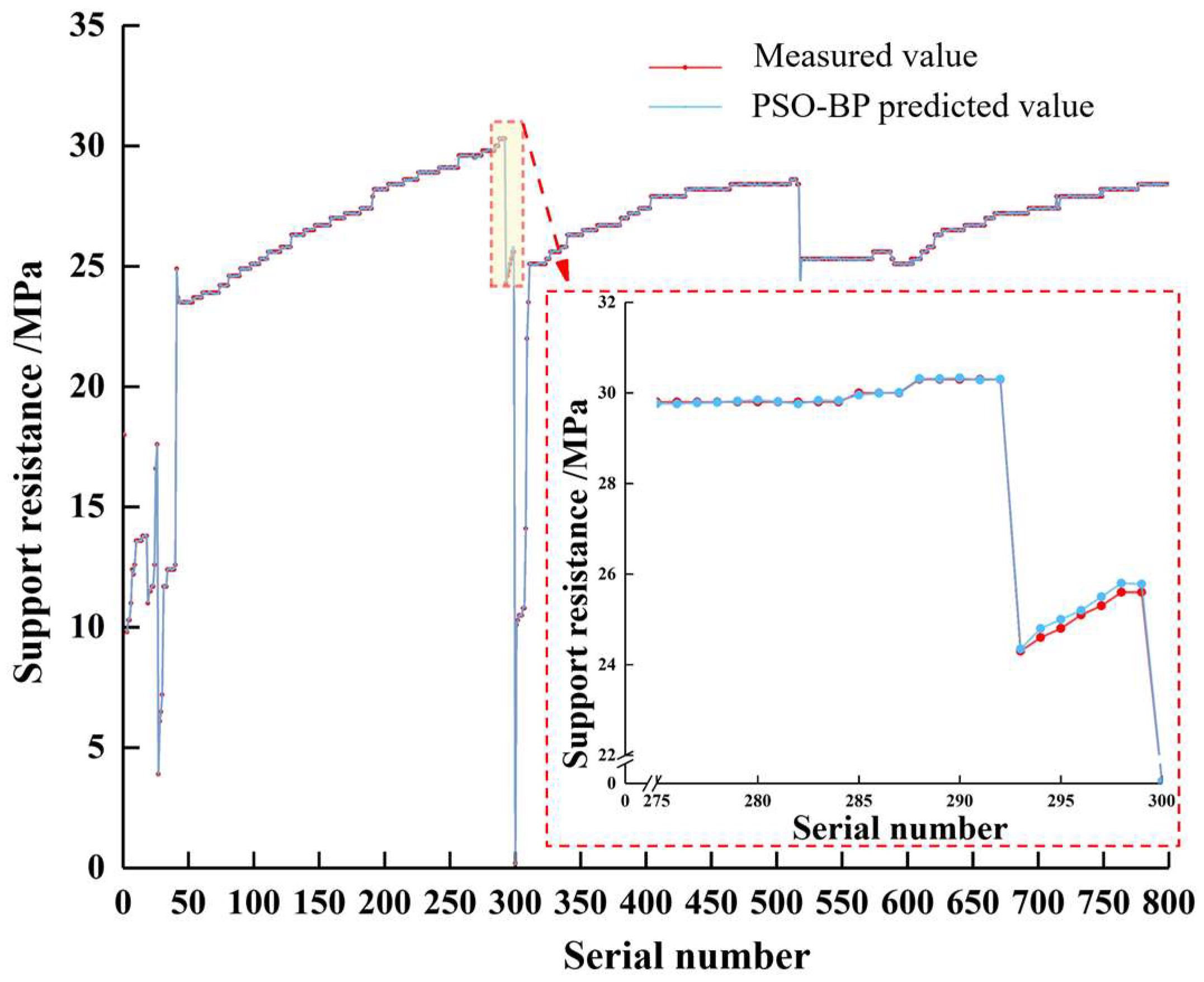
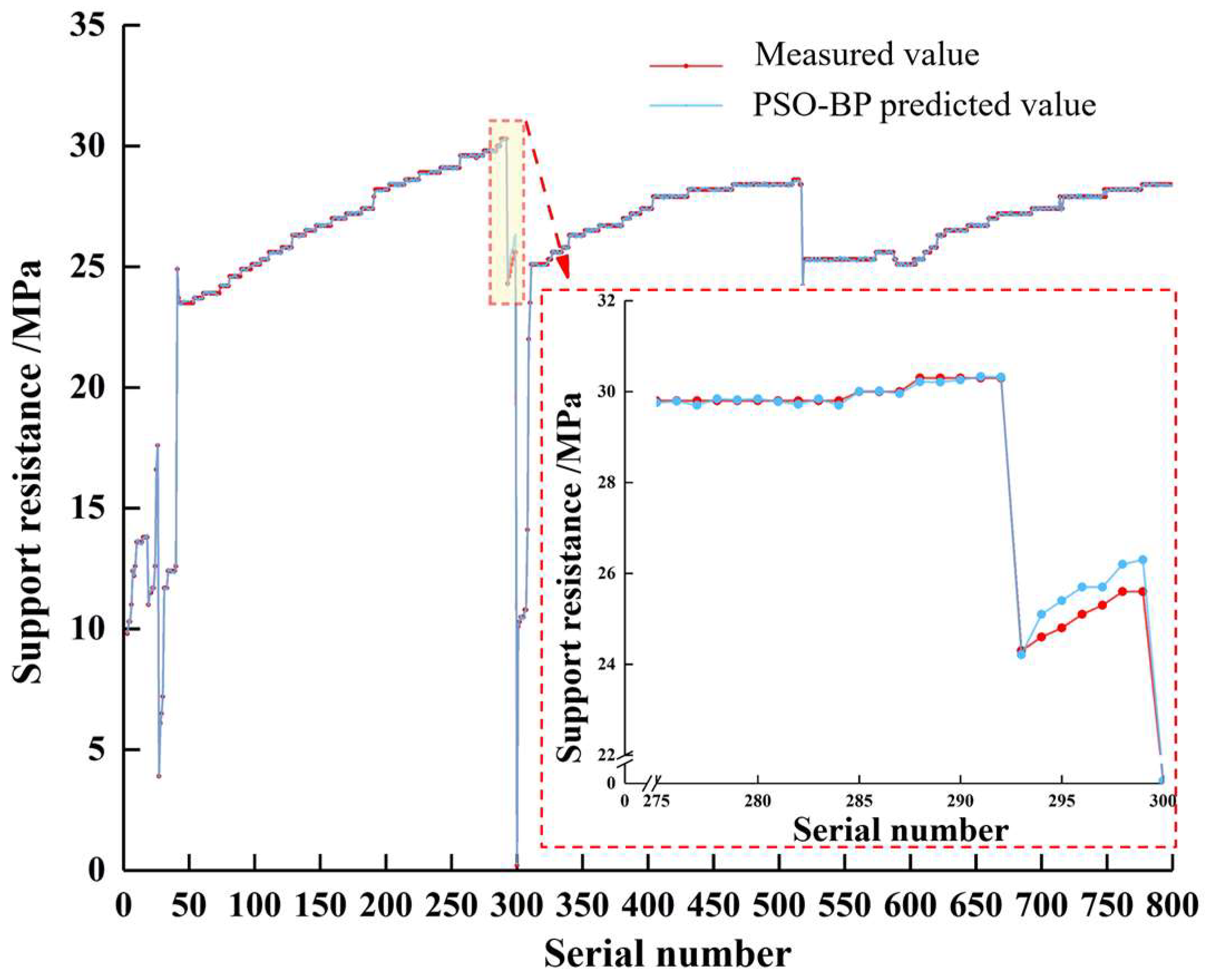
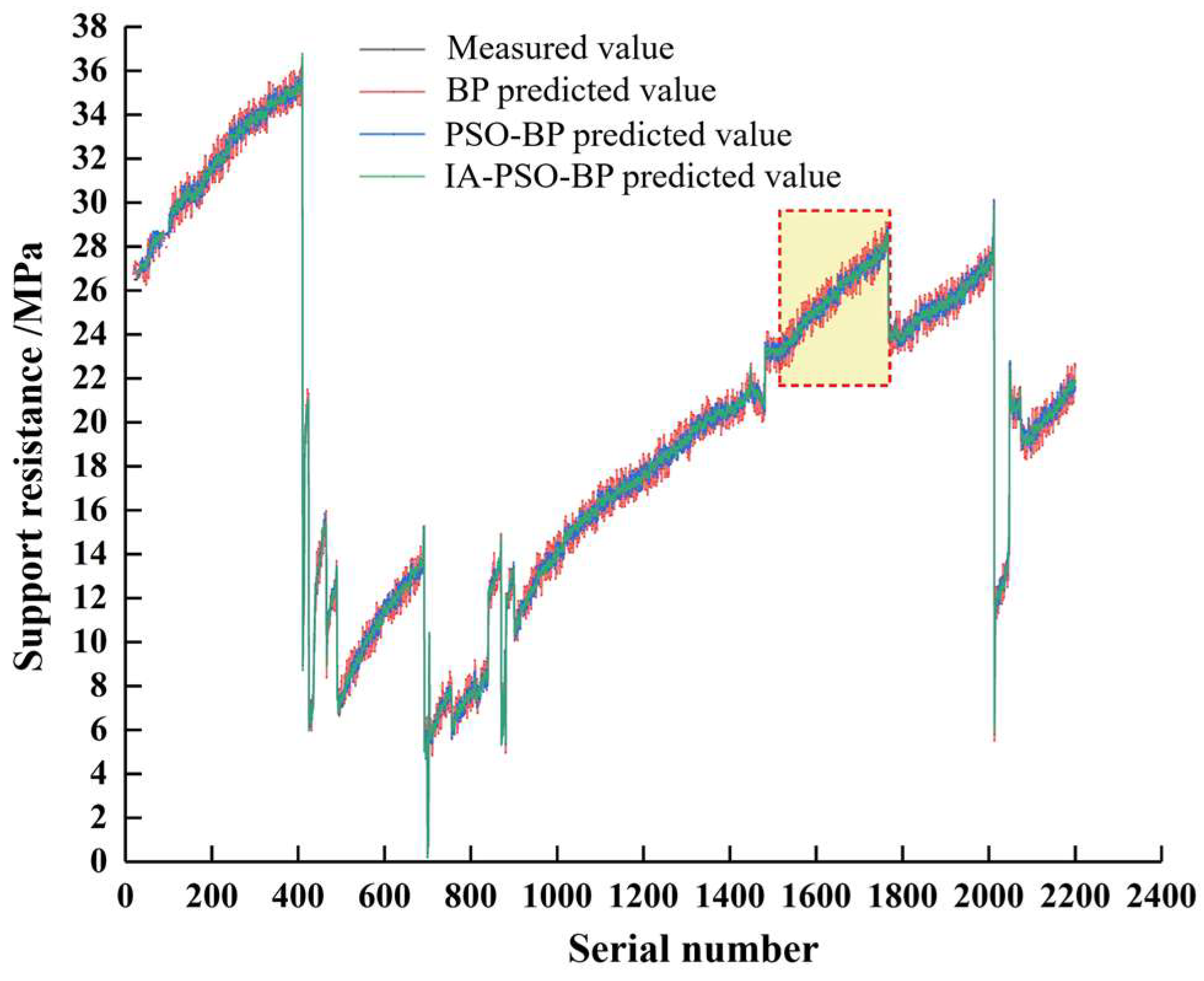
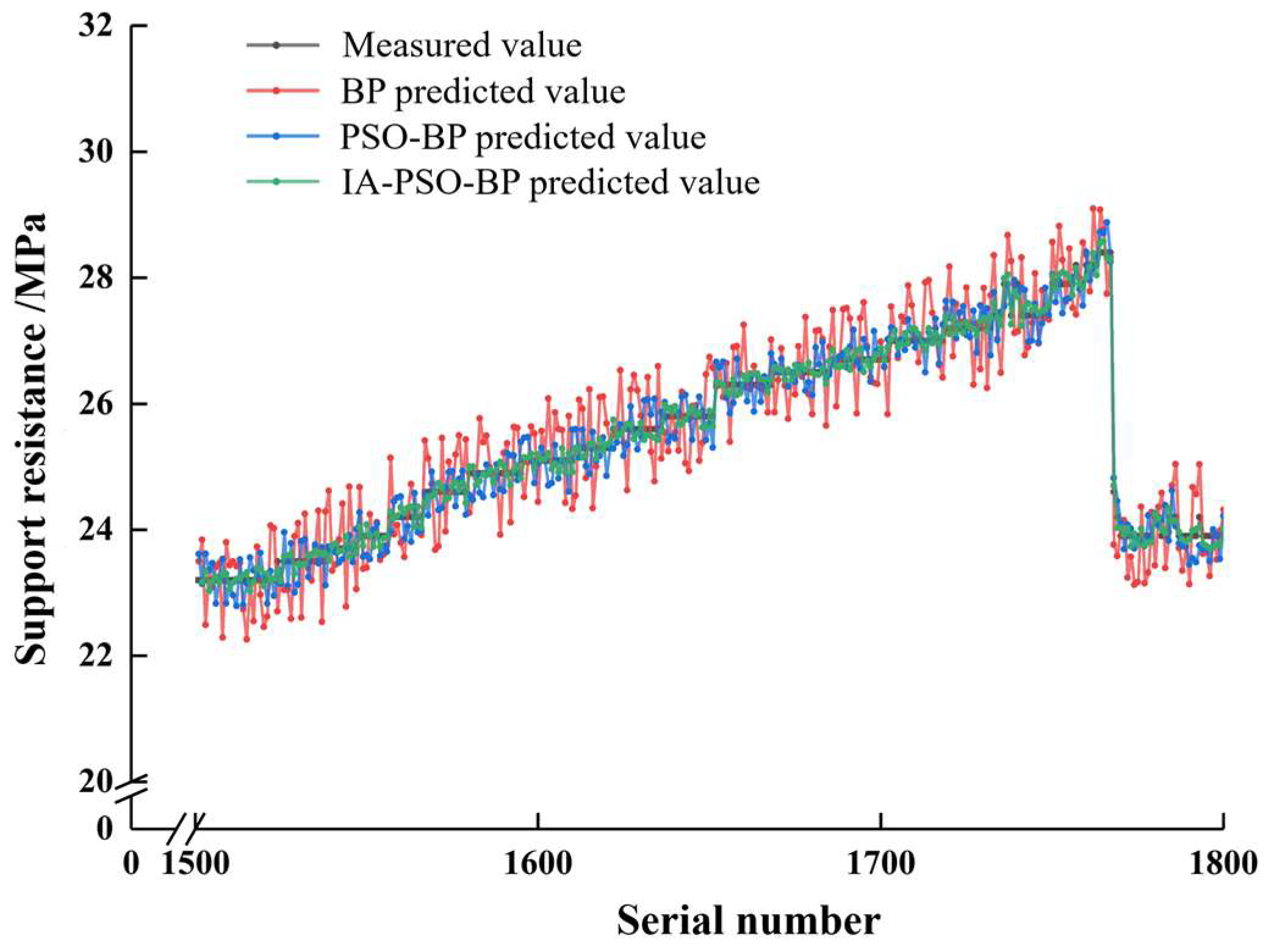
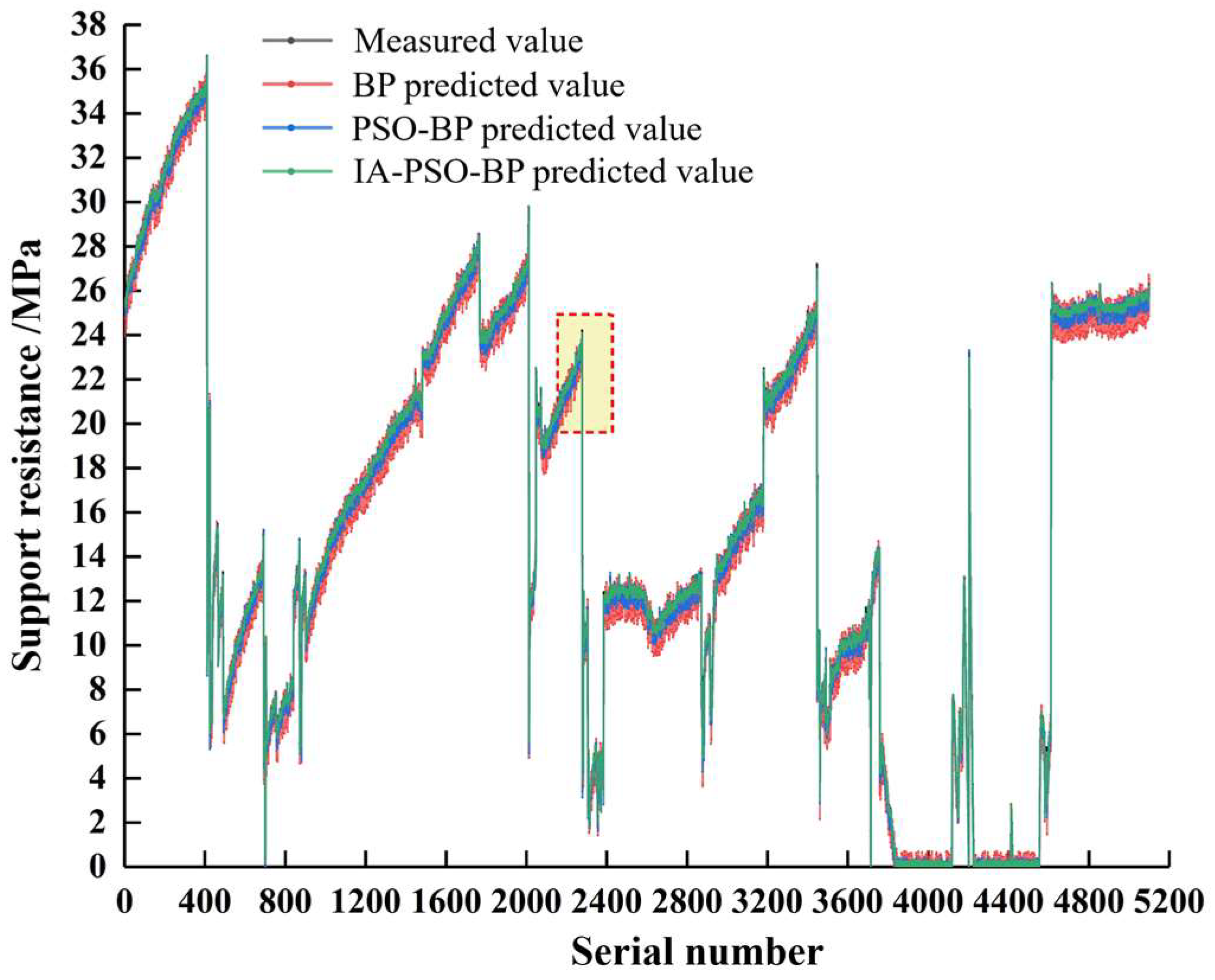
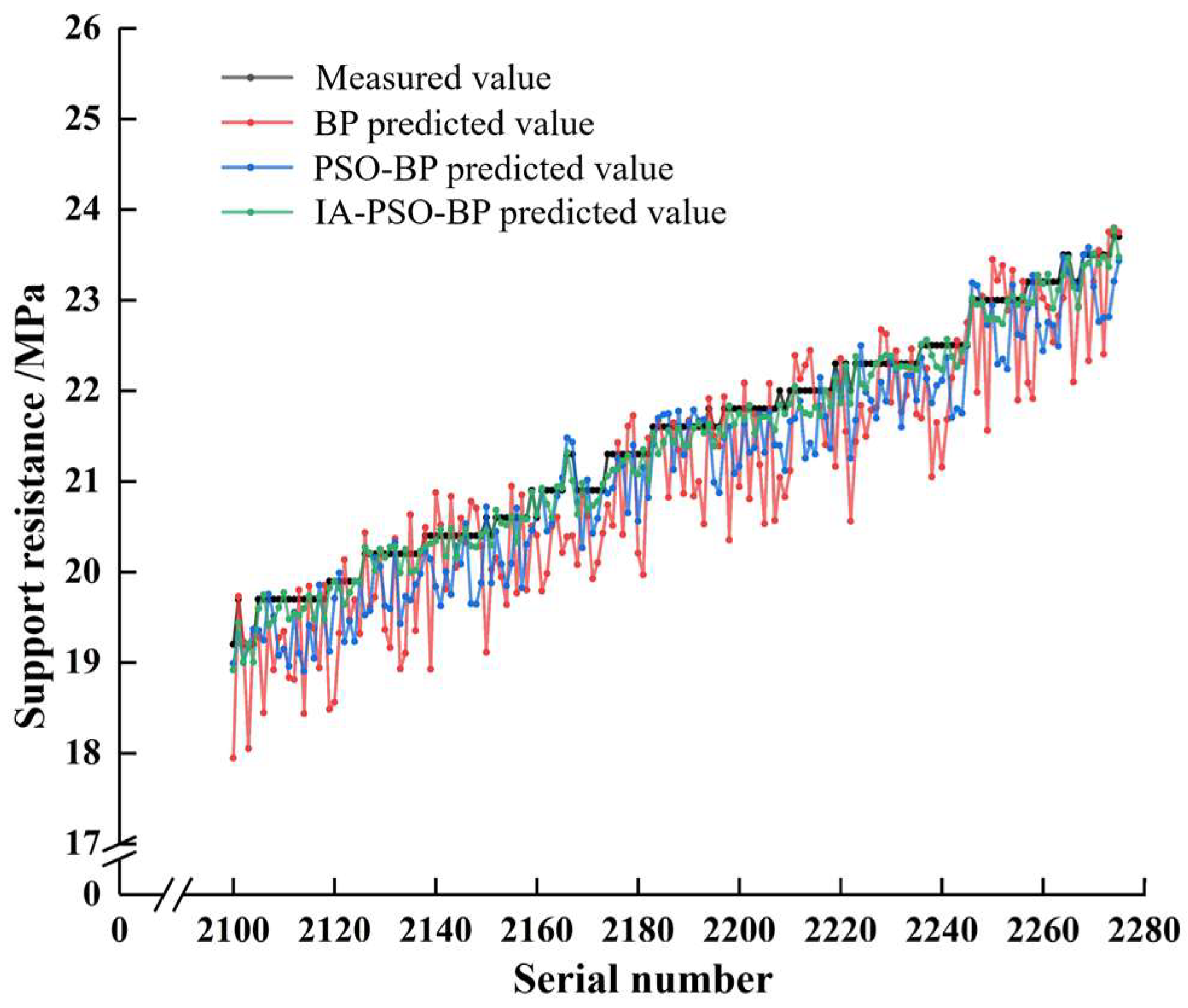
| Coal Seam Number | 2, 2−2 | 3 | 4, 4−1 | 6, 6−1 | 10, 10−2 | 12, 12−1 | 18, 18−2 |
|---|---|---|---|---|---|---|---|
| The average thickness | 2.88 m | 3.00 m | 3.31 m | 3.82 m | 3.04 m | 2.50 m | 4.11 m |
| Dataset Name | The Amount of Data | Statistical Description of the Dataset | Start and End Time |
|---|---|---|---|
| Dataset 1 | 4032 | Average 18.1, standard deviation 11.5 | 1 August 2022 to 15 August 2022 |
| Dataset 2 | 11,232 | Average 16.9, standard deviation 10.3 | 1 August 2022 to 10 September 2022 |
| Dataset 3 | 25,920 | Average 17.6, standard deviation 12.1 | 1 August 2022 to 31 October 2022 |
| Parameter Name | Parameter Experience Setting | Parameterization of This Article |
|---|---|---|
| Population size N | Generally: take 20~40, special difficulties: take 100~200 | N = 150 |
| Inertial weighting w | Generally: 0.9~0.4 | Decreases linearly with the number of iterations |
| Acceleration factor c1 and c2 | Generally satisfies c1 + c2 ≤ 4 | Adaptive change with the number of iterations |
| Dataset Name | Date Size | Training Set Size | Test Set Size |
|---|---|---|---|
| Dataset 1 | 4032 | 3232 | 800 |
| Dataset 2 | 11,232 | 9032 | 2200 |
| Dataset 3 | 25,920 | 20,820 | 5100 |
| Model | MAE | MSE | R2 |
|---|---|---|---|
| BP | 0.1049 | 0.0194 | 0.7832 |
| PSO-BP | 0.0935 | 0.0168 | 0.8947 |
| IA-PSO-BP | 0.0816 | 0.0139 | 0.9636 |
| Predictive Model | MAE | MSE | R2 |
|---|---|---|---|
| BP model | 0.0979 | 0.0182 | 0.8134 |
| PSO-BP model | 0.0861 | 0.0153 | 0.9165 |
| IA-PSO-BP model | 0.0754 | 0.0121 | 0.9769 |
| Predictive Model | MAE | MSE | R2 |
|---|---|---|---|
| BP model | 0.0921 | 0.0125 | 0.8273 |
| PSO-BP model | 0.0817 | 0.0117 | 0.9252 |
| IA-PSO-BP model | 0.0683 | 0.0109 | 0.9835 |
Disclaimer/Publisher’s Note: The statements, opinions and data contained in all publications are solely those of the individual author(s) and contributor(s) and not of MDPI and/or the editor(s). MDPI and/or the editor(s) disclaim responsibility for any injury to people or property resulting from any ideas, methods, instructions or products referred to in the content. |
© 2024 by the authors. Licensee MDPI, Basel, Switzerland. This article is an open access article distributed under the terms and conditions of the Creative Commons Attribution (CC BY) license (https://creativecommons.org/licenses/by/4.0/).
Share and Cite
Lai, X.; Tu, Y.; Yan, B.; Wu, L.; Liu, X. A Method for Predicting Ground Pressure in Meihuajing Coal Mine Based on Improved BP Neural Network by Immune Algorithm-Particle Swarm Optimization. Processes 2024, 12, 147. https://doi.org/10.3390/pr12010147
Lai X, Tu Y, Yan B, Wu L, Liu X. A Method for Predicting Ground Pressure in Meihuajing Coal Mine Based on Improved BP Neural Network by Immune Algorithm-Particle Swarm Optimization. Processes. 2024; 12(1):147. https://doi.org/10.3390/pr12010147
Chicago/Turabian StyleLai, Xingping, Yuhang Tu, Baoxu Yan, Longquan Wu, and Xiaoming Liu. 2024. "A Method for Predicting Ground Pressure in Meihuajing Coal Mine Based on Improved BP Neural Network by Immune Algorithm-Particle Swarm Optimization" Processes 12, no. 1: 147. https://doi.org/10.3390/pr12010147
APA StyleLai, X., Tu, Y., Yan, B., Wu, L., & Liu, X. (2024). A Method for Predicting Ground Pressure in Meihuajing Coal Mine Based on Improved BP Neural Network by Immune Algorithm-Particle Swarm Optimization. Processes, 12(1), 147. https://doi.org/10.3390/pr12010147






